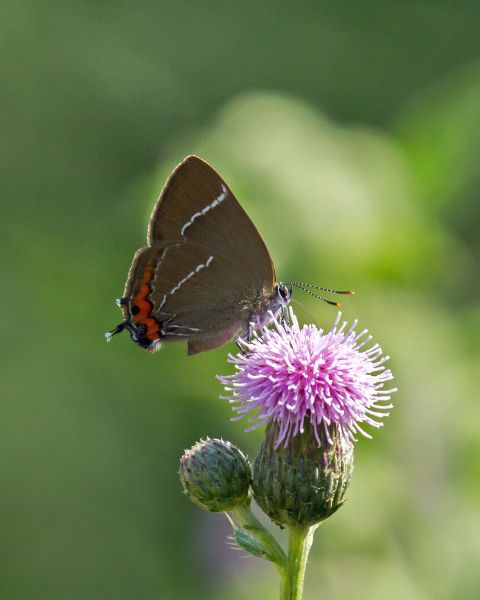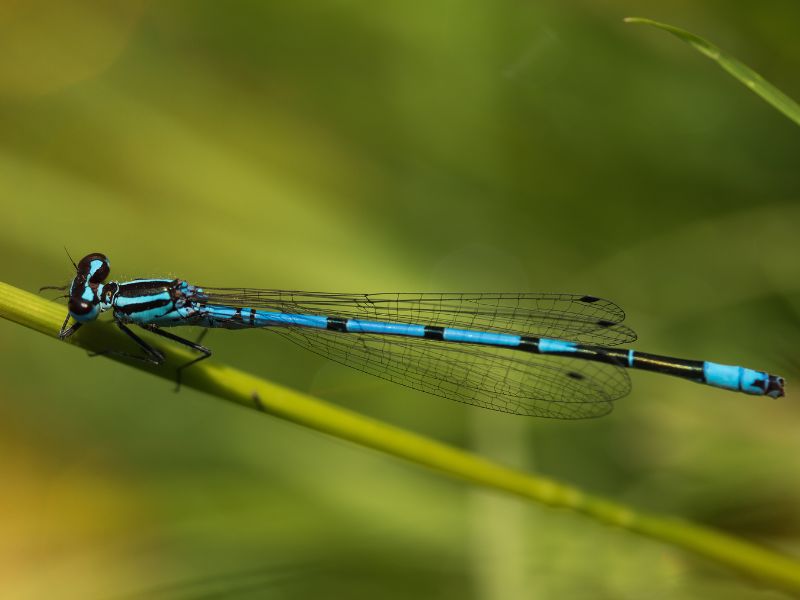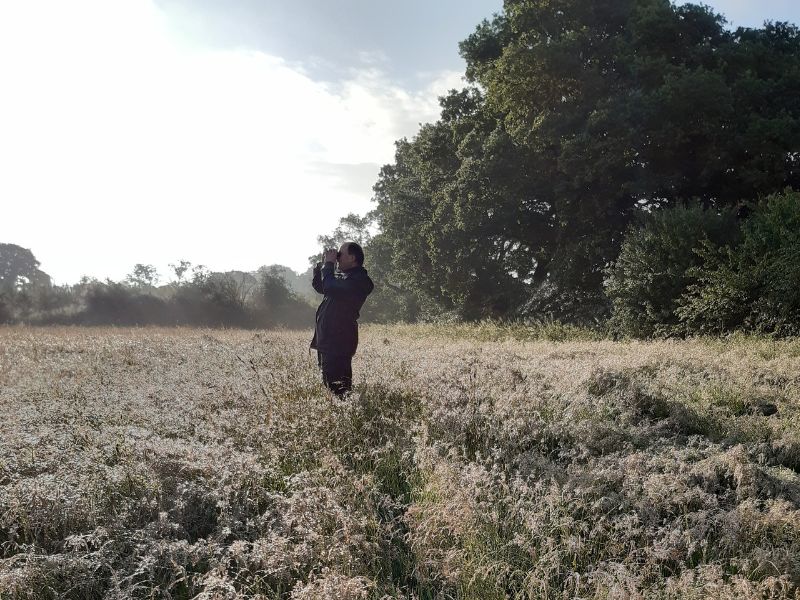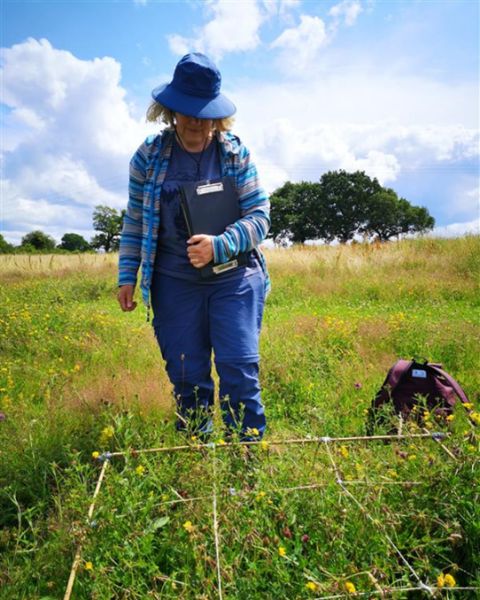RECORD has a long-established partnership with Chester Zoo. The Zoo’s Nature Reserve was first established in 2013, with a large expansion (termed ‘Phase 2’ by those in the know!) officially opening to the public in 2018. Throughout its development and subsequent management, wildlife recording has been crucial in assessing how this newly created habitat assemblage is helping local biodiversity. The majority of the Reserve is situated on land previously used as improved pasture for cattle grazing and sileage production, and hence is the result of a carefully planned restoration initiative. The long-term collection of wildlife data informs how the Reserve should continue to be managed going forward. Following the development of Chester Zoo’s Biodiversity Plan (2017–2027) and the Nature Reserve Monitoring Plan within that, RECORD was commissioned by the Zoo in 2020 to undertake annual surveys using consistent methodology which had been in place since 2017. For these surveys we follow standardised protocols from recognised national recording schemes. We survey the following groups:
From February 2020 until July 2023, Chloe Aldridge fulfilled the role of Ecological Monitoring Officer, and was responsible for organising and delivering the annual programme of monitoring, with assistance from local bird and plant experts. In October 2023, Matt Hampson took on this exciting role – and he is looking forward to the challenge!
Surveys are carried out twice a month – once in the first half of the month, once in the second half – following a protocol similar to that of the UK Butterfly Monitoring Scheme (transect guidance notes for context are available on the UKBMS website). A set transect route is walked at a slow, steady pace, with any and all butterflies and moths present within roughly a 2.5m arc in front of and to the sides of the surveyor being recorded.

In a typical year, records of at least 20 butterfly and day-flying moth species are usually made on the Reserve – quite an impressive tally for what is effectively one meadow area!
The most commonly encountered species include Meadow Brown (Maniola jurtina), Gatekeeper (Pyronia tithonus), various Whites and ‘golden’ Skippers, Common Blue (Polyommatus icarus), several members of the family Nymphalidae such as Comma (Polygonia c-album), Speckled Wood (Pararge aegeria), Peacock (Aglais io) and Red Admiral (Vanessa Atalanta), and of the day-flying moths, species like Silver-Y (Autographa gamma), Six-spot Burnet (Zygaena filipendulae) and Yellow Shell (Camptogramma bilineata). In 2023, White-letter Hairstreak (Satyrium w-album), an important, protected species, was also seen on the Reserve for the first time high up in the canopy of a Wych Elm tree.
Surveys are carried out once a month, largely following the monitoring protocol of the national recording scheme as outlined by the British Dragonfly Society. A set transect route is walked at a slow, steady pace, and all dragonflies and damselflies observed are recorded. They survey route takes advantage of vantage points over ponds, and we use binoculars to identify species.

In a typical year, records of around 10 species (sometimes a few more!) are usually made on the Reserve – again, not a bad total for a few waterbodies in one area! By far the most common species is the Azure Damselfly (Coenagrion puella), but other frequently observed species include Blue-tailed Damselfly (Ischnura elegans) and Common Darter (Sympetrum striolatum). Other species recorded, although typically less abundant, include Black-tailed Skimmer (Orthetrum cancellatum), Brown Hawker (Aeshna grandis), Emperor Dragonfly (Anax imperator), Four-spotted Chaser (Libellula quadrimaculata) and Large Red-tailed Damselfly (Pyrrhosoma nymphula).
We often record behaviours that indicate that species are breeding, such as mate-guarding, ovipositing (egg-laying) and males defending their territories. This provides further evidence that the ecological requirements of these species are being met.
In 2023, a pair of Red-eyed damselflies (Erythromma najas) were also recorded on the Reserve for the first time. The fact that the habitats on the Reserve site continue to attract ‘new’ species is excellent news indeed!
Surveys are carried out once a month, following an approach similar to that taken by the UK Pollinator Monitoring Scheme. A transect route is walked and we also use passive sampling (pan trapping). The transect is walked at a slow, steady pace. Slight deviations from the route are allowed so that flowering plants can be inspected, as this is where pollinating insects are most likely to be encountered.
In a typical year, records of around 20 or so bee species are usually made on the Reserve. This includes most of the ‘Big 7’ common bumblebee species, certain solitary mining bees (genus Andrena) and base-banded furrow bees (genus Lasioglossum) as well as their cuckoos or ‘cleptoparasites’ (bees in the genus Nomada). Variable numbers of wasp species are recorded – both the familiar, yellow-and-black banded social species and other solitary predatory or parasitic species. Somewhere in the range of 20–40 hoverfly species are also recorded on the Reserve each year. Features like log piles, which were specifically requested during the design phase of the Reserve, are of great value to leafcutter/mason bees (Megachile and Osmia species) and solitary, cavity-nesting wasps. The ‘wet meadow’ area of the Reserve attracts locally scarce, wetland specialist species of hoverfly like Anasimyia contracta and Eurimyia lineata.

Ten bird surveys are carried out late March - mid-late June. A transect route is walked which includes a circuit of the inner perimeter of the Nature Reserve meadow area and a stretch of the Shropshire Union Canal towpath to the north of the Reserve. The survey methods are largely based on the 'Common Birds Census' previously run by the British Trust for Ornithology (BTO). We use a 'territory' mapping approach to estimate the number and position of breeding bird territories within the survey area.
Whilst out surveying, we record important bird behaviours on a map such as individuals observed 'Singing', having a 'Territorial dispute', sitting 'On a nest' etc. As there is a lot to note down during the survey, recognised codes are used to represent these behaviours and the species found. Observing behaviours which indicate breeding on multiple occasions in the same place helps to provide evidence of a territory. If young or eggs are seen in a nest this only needs to be recorded once.
At the end of the survey season, all of the data from different surveys is compiled during a 'territory mapping' process and the end result is a series of maps showing where different species are thought to be breeding within the survey area. We are very grateful for assistance from two experienced local birders with out bird surveys and territory mapping, whose considerable lifetime experience in the field is invaluable.
Every year since monitoring began in 2017, between 13 and 17 bird species have are thought to have been breeding on the reserve according to our survey results. In 2023, territories of 17 bird species were mapped, the joint highest result (with 2021). This again, reassuringly, suggests that the reserve is indeed providing for local wildlife

The meadow area of the Reserve is carefully managed to promote maximal plant species diversity, being cut just once a year in late Summer / early Autumn. To create this area back in 2016 - 2017, zoo conservationists, with expert advice from botanical consultant Dr Hilary Ash, removed the fertile topsoil (a legacy of years of agricultural improvement) and seeded the ground to encourage the growth of wildflowers. Three small 'test plot' areas were also created on the Reserve using different management practices. The point of this was to provide comparisons, allowing us to demonstrate the effectiveness of meadow creation and management techniques. We survey each of these areas so that we can continue to compare and monitor the main meadow.
The survey methodology is adapted from the protocol for Rapid Grassland Assessment prescribed by Plantlife (and originally designed by the Berks, Bucks and Oxon Wildlife Trust, specifically for surveying their nature reserves!). The protocol is intended to be undertaken annually for seed-restored grasslands (for more information, see here). Plants are surveyed using a quadrat (a metre-square frame), placed at different, fixed points across the meadow, covering both the main meadow and ‘test plot’ areas. Within the quadrat the abundance and species composition of the plants is recorded.
So how is the Reserve meadow doing? Dr Ash said in 2023: ‘My impression, upheld by the figures, is that the meadow is steadily moving in the right direction – more desirable species, less undesirable.' Good news for the wildlife on the Reserve!
In addition to the surveys mentioned above, RECORD and zoo staff also carry out various other forms of species monitoring and recording in and around the Nature Reserve. These include: